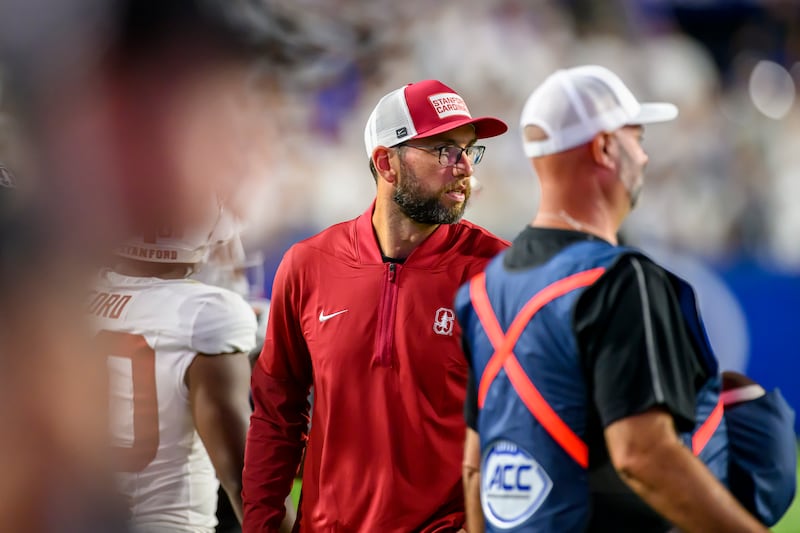It could be an impossible job.
When BYU and Stanford met in LaVell Edwards Stadium earlier this month, ESPN continually showed shots of former Cardinal quarterback Andrew Luck on the sidelines. He was hired to be the football program’s general manager.
In Provo, recently elevated athletic director Brian Santiago announced that former BYU, NBA and European League basketball player Travis Hansen will be the senior associate athletic director in charge of NIL and revenue sharing. He will work with each general manager over each sport.

Oklahoma football hired NFL scout Jim Nagy, who worked in the business for two decades, to be a general manager. Duke basketball gave a similar role to Rachel Baker, a former executive with Nike.
Schools all over the country are creating these general manager roles for individual sports and for their athletic departments.
Aaron Miller and Ben Gardner just published a Substack piece titled “College Sports is Breaking. Here’s how we fix it.”
They conclude that being a general manager in college sports may be the toughest job in the sports industry, a role more difficult than anything in the NFL, NBA, Major League Baseball or TV networks.
Why?
Because these guys are riding on a slippery whale.
They have to work with an ever-changing set of challenges that has few guidelines or rules. And the ones they do have can change at any time depending on a court ruling, lawsuit or act of Congress.
Writes Miller: “The college GM job is relatively insane. College GMs have to:
- “Recruit an athlete with zero market transparency. They have no idea how much money other schools are offering.
- “Retain players without any real defenses. NIL contracts aren’t tied to performance, and students are transferring at the first scent of more dollars.
- “Raise money from donors/boosters in order to balance a budget.
- “Juggle academic and NIL compliance constraints.
- “AND adapt on the fly as rules change midseason because of lawsuits, legislation and NCAA policy changes.”
Guys like Luck and Hansen must manage and react to the post-House settlement challenges, where fewer schools can truly compete in football and basketball because they simply can’t tap into enough money sources each season.

You can see the immediate reactions in how some schools are cutting budgets for Olympic and nonrevenue sports. The costs and pressures of running an athletic program are compounding every season.
Even Alabama has run into problems because it is not finding enough “magic money” that it seemed to mine from sources in the state that lived and died passionately with their beloved football program.
Meanwhile, schools with major booster involvement (Oregon with Nike, Texas Tech with energy companies like American Eagle and Halliburton) are lights out with NIL money.
Locally, schools like Utah State, Weber State, SUU and Utah Tech struggle to keep up with in-state P4 money coming into Utah and BYU. While all schools face roster transfers, these programs painfully face transfer portal departures and retention challenges that are even more damaging to continuity and depth.
Miller concludes there are a few lifelines that can save college sports, and they include external capital and collective bargaining. External capital, like hedge funds and investment companies, could stabilize budgets. Collective bargaining could bring cost certainty and fairness for athletes.
Sports Business Journal published a story highlighting PayPal entering an agreement with the Big Ten and Big 12 to partner with tuition payments at select schools. The agreement is for five years at an estimated $100 million.
On the other hand, there are big questions on how revenue sharing and NIL impact women’s sports and Title IX. Current models project football will receive 75% of the mandated $20.3 million each school must pay their student-athletes.
Meanwhile, Hansen, a successful businessman and entrepreneur, is just months into his new venture with this crazy role dealing with agents, NIL and revenue sharing.
He’s riding the whale with no bridle to control the direction or velocity.
If you know Hansen, his reaction is simple and direct, with a smile.
He’d explain it this way: “It’s exciting. It’s fun. Let’s go.”

